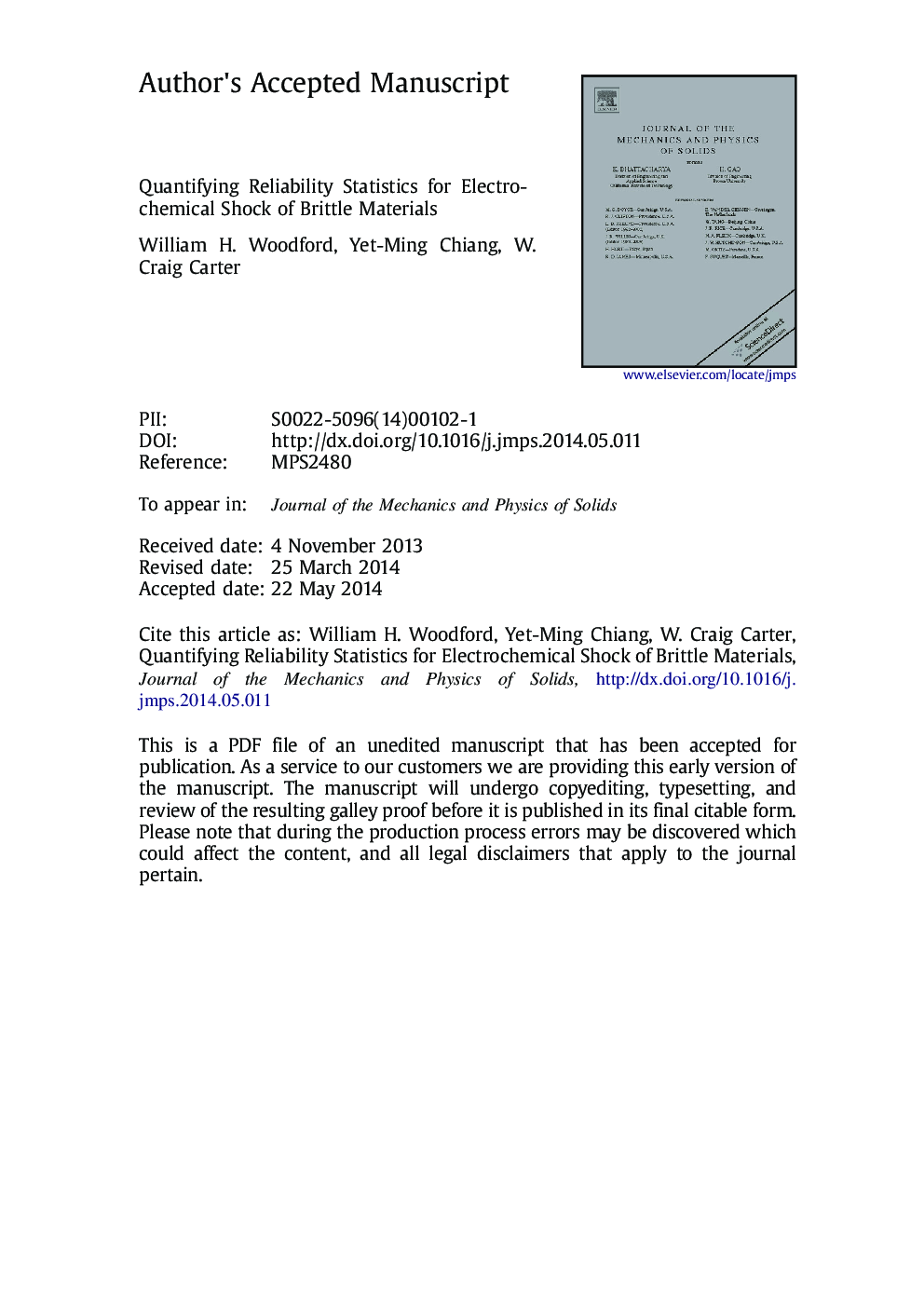| Article ID | Journal | Published Year | Pages | File Type |
|---|---|---|---|---|
| 7178220 | Journal of the Mechanics and Physics of Solids | 2014 | 29 Pages |
Abstract
In brittle polycrystalline materials, anisotropic shape changes-such as those due to thermal expansion, composition changes, and piezoelectricity-can induce stresses severe enough to drive fracture. The stresses developed are microstructurally heterogeneous and develop in proportion to a generalized external stimulus rather than an applied load; as a consequence, traditional Weibull models do not capture the relevant scaling of failure probabilities with respect to applied stimulus or microstructural feature sizes. These limitations are surmounted by a stochastic method, called Finite Element plus Monte Carlo (FE+MC), which enables quantification of reliability statistics in brittle polycrystalline materials subjected to microstructurally heterogeneous stresses which may be driven by non-mechanical stimulii. A finite element analysis computes the stress distributions for a hypothetical defect-free virtual microstructure and a subsequent Monte Carlo analysis distributes flaws throughout the microstructure with sizes chosen from an experimental flaw size distribution. The FE+MC method is validated for uniaxial tensile loading, for which the expected Weibull distribution of failure probability is reproduced. As a demonstration of the utility of this method in a more complex stress state, we consider electrochemical shock of polycrystalline LiXCoO2 electrodes; the computed composition-dependent failure probabilities reproduce key features of experimental acoustic emission measurements not explained by previous modeling approaches.
Keywords
Related Topics
Physical Sciences and Engineering
Engineering
Mechanical Engineering
Authors
William H. Woodford, Yet-Ming Chiang, W. Craig Carter,
